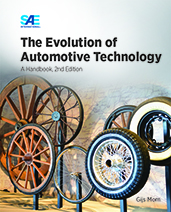Technical Paper
Numerical Study on the Design of a Passive Pre-Chamber for a Heavy-Duty Hydrogen Combustion Engine
2024-04-09
2024-01-2112
Lean-burn hydrogen internal combustion engines are a good option for future transportation solutions since they do not emit carbon-dioxide and unburned hydro-carbons, and the emissions of nitric-oxides (NOx) can be kept low. However, under lean-burn conditions the combustion duration increases, and the combustion stability decreases, leading to a reduced thermal efficiency. Turbulent jet ignition (TJI) can be used to extend the lean-burn limit, while decreasing the combustion duration and improving combustion stability. The objective of this paper is to investigate the feasibility of a passive pre-chamber TJI system on a heavy-duty hydrogen engine under lean-burn conditions using CFD modelling. The studied concept is mono-fuel, port-fuel injected, and spark ignited in the pre-chamber. The overall design of the pre-chamber is discussed and the effect of design parameters on the engine performance are studied.

